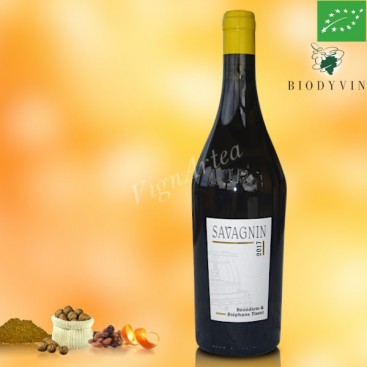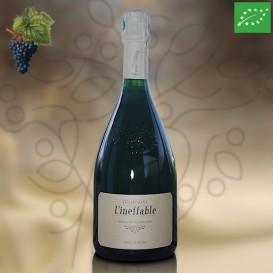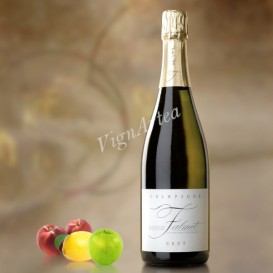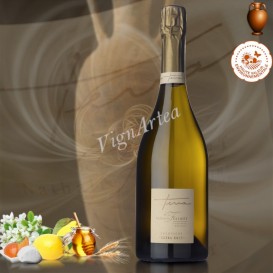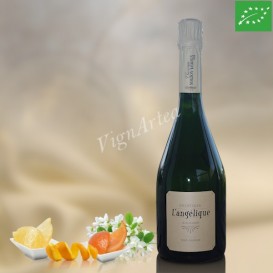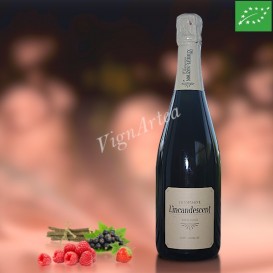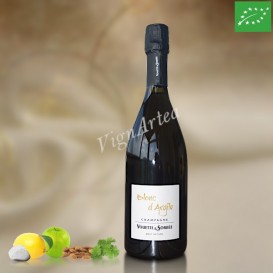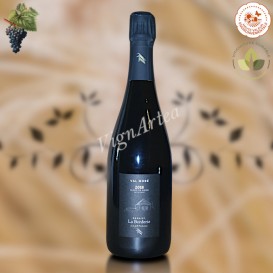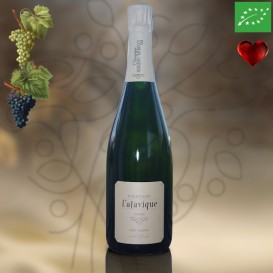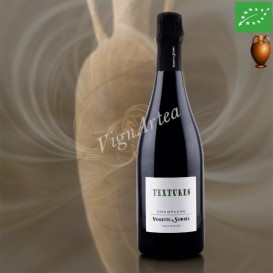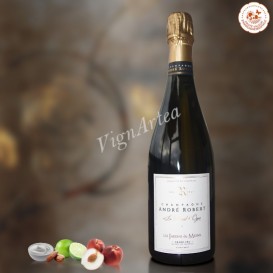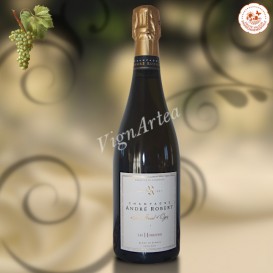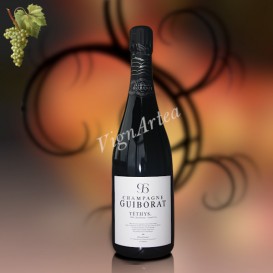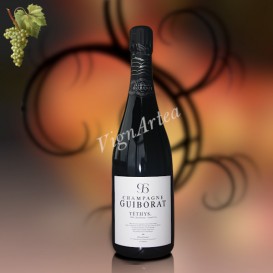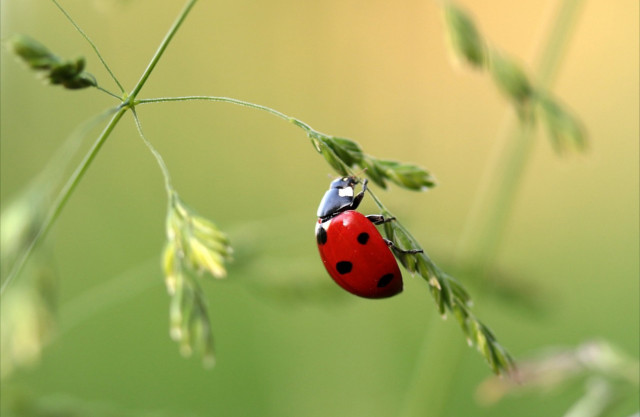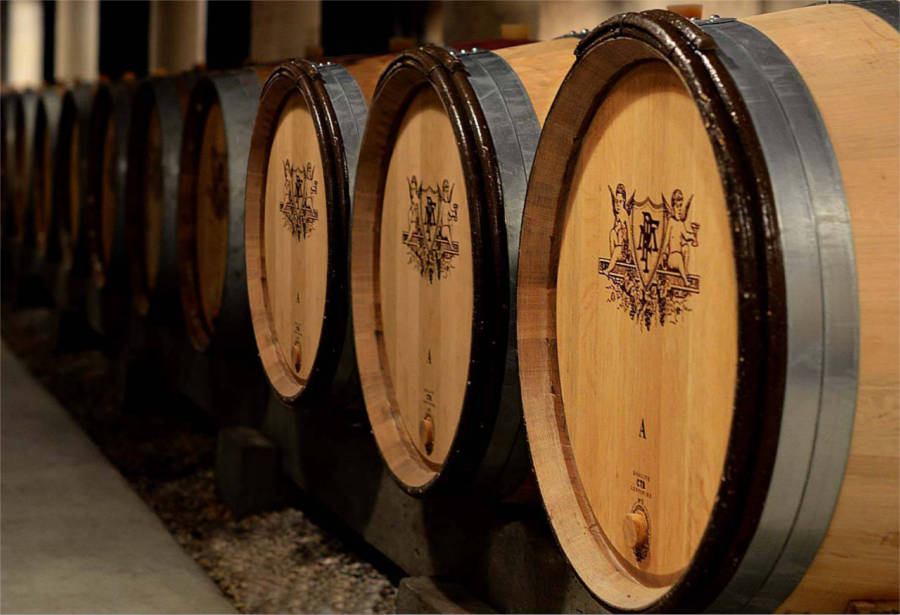SAVAGNIN 2018 White oxidative wine (Stéphane TISSOT)
JURA - AOP ARBOIS - DRY WHITE WINE
Grape variety: Chardonnay (100%)
Biodynamics Native yeasts
Under flor ageing 228-liter oak barrels for 32 months
- Nose: intense. Aromas of nuts, raisins, candied citrus fruits with a hint of morel.
- Palate: tonic and salivating. Long finish with candied citrus fruits.
Tasting date: March 2023.
OUR OPINION: excellent !
Other vintage available:
TERROIR
The Savagnin cuvée is a blend of two plots : En Spois, located in Arbois village and and La Vasée, located in Montigny-Lès-Arsures. Two different places, two marly terroirs but of different ages:
- The plot En Spois is based on a marly series that was formed in the Triassic between -252 and -201 million years ago. The region then formed a set of shallow lagoons, isolated by shoals and fed by rivers.
The plot's base is made up of so-called iridescent Keuper marls, whose colors vary from red, green or white, depending on the iron oxidation degree and the presence or not of dolomites.
At the plot's top, the black marls of the Rhetian (the Keuper upper level) emerge, which provide a fairly heavy dark brown clay soil. A thin runoff silt layer on the surface conceals the subsoil marls.
- The plot La Vasée offers, at its summit, a soil of gray Lias marls formed after the Triassic marls, between -201 and -174 million years ago, in a shallow sea, not very rough and therefore not very oxygenated. These marls are today covered with some fine limestone scree : the whole forms an excellent vines soil, light and warm.
The plot's base is occupied by gryphite limestones which mark the Lias period beginning and form the transition between the Triassic Keuper and black marls and the Lias gray marls. This gryphite limestones layer, rich in fossil oyster shells (gryphites), testifies to a stirring period of the seas that covered the Jura 201 million years ago, and which allowed, thanks to its oxygenation, carbonate sedimentation.
WINEGROWING & WINEMAKING
The vines have been cultivated according the biodynamics principles since 2004 and cared by use of preparations and herbal teas that the estate produces itself.
The grapes are harvested manually, destemmed and then pressed by pneumatic pressing. A light sulphits dose is added and the must is left for a short settling period.
It is then drawn off in vats where alcoholic fermentation starts spontaneously by the native yeasts action, followed by the malolactic fermentation.
The must is then matured for 33 months on its lees in 228-liter barrels.
No topping is practiced, the wine is aged under its yeast veil. It is then lightly filtered before bottling. No sulphits are added at bottling.
| Country | Jura |
| Color | White |
| Orange wines | No |
| Clay amphorae wines | No |
| Type | Dry |
| Vintage | 2017 |
| Capacity | 75 cl |
| Single Grape Variety | Savagnin |
| Alcohol rate | 15 % |
| Quality Designation | Arbois |
| Cellar Potential | 30 years. |
| Service advise | 14°C. (67°F). Open 2 hours before the service. |
| Culture Methods | Biodynamic |
| Fining | No |
| Filtering | Yes |
| Comments | Fermentation with native yeasts. Under flor ageing in 228-liter oak barrels for 32 months. |

